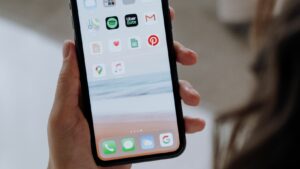Table of Contents
ToggleHow to Lock Certain Apps on iPhone
Locking apps on an iPhone is crucial for maintaining privacy and security in today’s digital age. By restricting access to specific applications, users can prevent unauthorized individuals from viewing sensitive information. This is particularly important for safeguarding personal data such as messages, photos, and financial details. App locking ensures that only the intended user can access certain areas of their device, adding an extra layer of protection against potential breaches.
When it comes to locking apps on an iPhone, users have the option to choose between native features provided by Apple and third-party solutions available on the App Store. Native iPhone features like Touch ID, Face ID, and Screen Time offer built-in mechanisms for securing apps and content. On the other hand, third-party apps such as AppLock and Guided Access provide additional customization and advanced security options for locking specific applications. Users can explore both options to determine the most suitable approach based on their preferences and security needs.
![]() Using Screen Time to Lock Apps
Using Screen Time to Lock Apps
Building on the importance of app-locking for iPhone users to ensure privacy and security, utilizing Screen Time can offer effective control over app access.
Setting Up Screen Time
 To initiate the app-locking process using Screen Time, users can follow these simple steps:
To initiate the app-locking process using Screen Time, users can follow these simple steps:
- Accessing Screen Time: Open the “Settings” app on the iPhone and select “Screen Time.”
- Enabling Screen Time: Toggle the Screen Time feature on to start utilizing its functionalities.
- Setting up a Passcode: Create a unique passcode that will be required to access and modify Screen Time settings.
Screen Time serves as a comprehensive tool that allows users to gain control over their device usage and app access. By following these steps, users can establish a secure environment for their sensitive information.
Adding App Limits
Users can set specific limits on app usage to restrict access to certain applications:
- Navigating to App Limits: Within the Screen Time settings, select “App Limits.”
- Choosing Apps: Pick the specific apps that need restrictions by tapping on “Add Limit.”
- Setting Time Limits: Set the desired time limits for each selected application to regulate daily access.
By adding app limits through Screen Time, users can effectively manage their app usage and ensure that sensitive applications are only accessible within set time constraints, bolstering security measures.
Creating Downtime Schedules
To establish downtime schedules for app-locking purposes, users can take the following actions:
- Accessing Downtime Settings: Within Screen Time, go to “Downtime.”
- Setting Downtime Periods: Choose the days and times when the device should be in downtime mode.
- Customizing Allowed Apps: Select specific apps that can be accessed during downtime, ensuring essential applications remain available.
By creating downtime schedules through Screen Time, users can restrict app access during designated periods, reinforcing privacy and security measures on their iPhones.
![]() Guided Access for Individual App Locking
Guided Access for Individual App Locking
Enabling Guided Access
 To enable Guided Access, one can follow these steps:
To enable Guided Access, one can follow these steps:
- Go to “Settings” on the iPhone.
- Tap on “Accessibility.”
- Scroll down and select “Guided Access.”
- Toggle the switch to turn it on.
- Set a passcode that will be used to exit Guided Access.
- Open the app you want to lock.
- Triple-click the Side button on newer iPhone models or the Home button on earlier models.
- Adjust settings like time limits and disable certain areas of the screen if needed.
- Tap on “Start” to begin the Guided Access session for that particular app.
Enhancing iPhone security through app-locking is crucial for safeguarding sensitive information. By utilizing native features like Screen Time and Guided Access, users can set app limits and individual locks to bolster their privacy. Third-party apps such as “AppLock” and “Lockdown” offer additional security layers with fingerprint or face ID authentication. To ensure robust protection, it’s essential to select a strong passcode and regularly update access permissions. By incorporating these practices, users can maintain a high level of security and confidently navigate their digital landscape.
